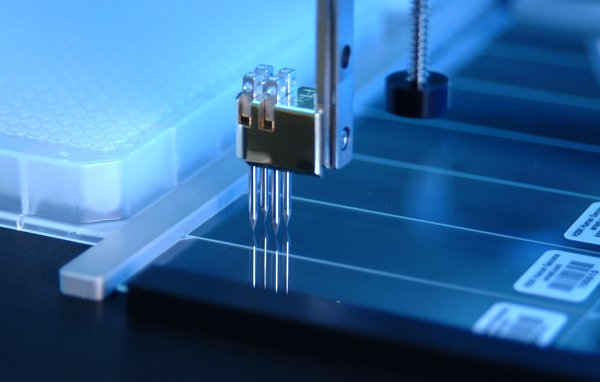Microarrays, also known as chips or biochips, are created for the sole purpose of easing the study and for research on DNA and genes. They can monitor changes in proteins as well as the levels of expression in the genes themselves. They are one of the leading tools used by scientists in their advanced research and help to boost their investigations to higher levels.
Microarray printers or “spotters,” as they are called, are available in laboratories to reproduce DNA and protein arrays. These printers help in lowering the number of errors in an investigation, improving on time management and preventing extra expenses to the establishments using their services.
Microarray Tools
There are many printers and equipment that can help in research. Some of these are highly advanced, but they also give the best in terms of service and production.
Whether it is working with DNA or protein arrays, the development and construction of a printer is very crucial. There are certain printers that aid the creation of an array more than others. Some of them are as given below:
Non-Contact Printers
Non contact printing is a crucial tool for creating high quality products. Non-contact printers are complex instruments and have the capability to create the best products in the entire business. Among their benefits is their ability to print at a range of sizes, even though the adjustments are slightly difficult to manage. A non-contact printer is a delicate instrument, so it requires control on the amount of voltage being taken in by the machine.
A deviation in the setting of the spot size can lead to an increase in the number of spots missed by the printer, so it is important to monitor this aspect as well. Although this is a complex and expensive machine, a non-contact printer is one of the best in the field.
Gene Expression Microarrays
The best quality microarrays are manufactured using a non-contact synthesis made from digital sequence files. This is done by using non contact printers to get the best possible product. Microarrays made through non contact printers are highly specific.
They have a good reputation when they are working with DNA and proteins and give the best service possible to both researchers and scientists. Non contact microarrays are highly sensitive; the minimum amount of any material hybridized on these arrays should be 250ng.
With the proper tools, microarrays have helped scientists and researchers all around the world to excel in the fields of genomics and the biological studies of living things. They offer a gateway to a better understanding of the science of illnesses and cures. Since companies working closely with doctors have a better understanding of the tools and instruments needed, they know what to make and how to make it.
Moreover, with the proper tools and equipment, making the best microarrays has become easier. All that is required is good functioning, as well as high quality machinery and proper tools of the trade, and the researchers can do the rest.
Leland Jones is an experienced researcher and has dealt closely with the manufacturing and performance of non-contact printing. He is currently helping companies to enhance their research further. He often likes to surf good microarray printer websites like http://www.arrayjet.co.uk.

